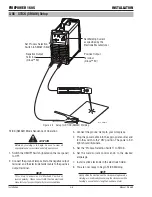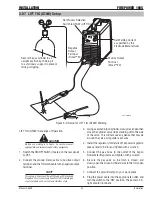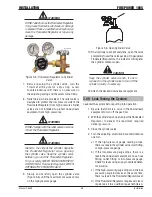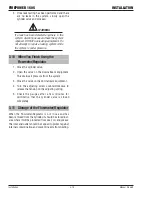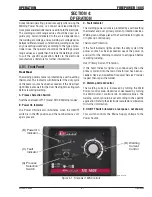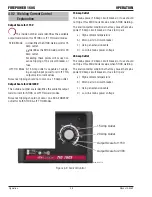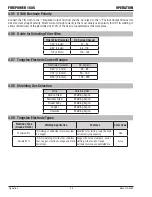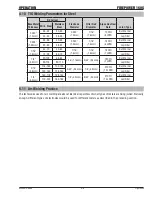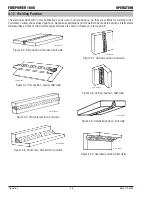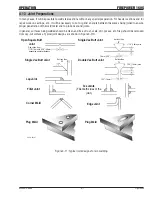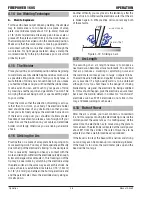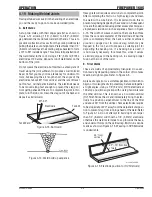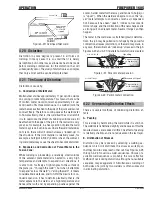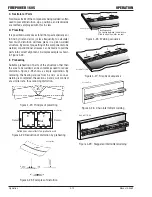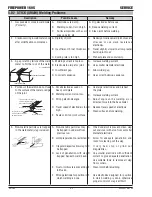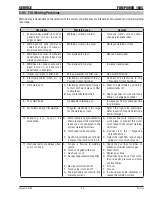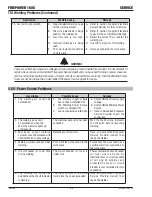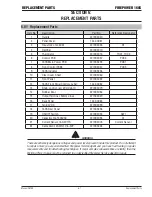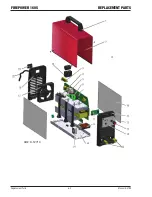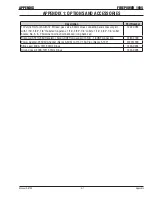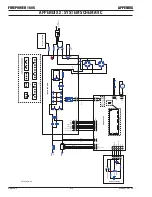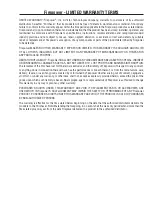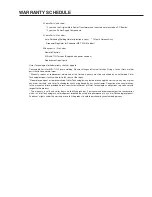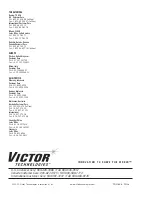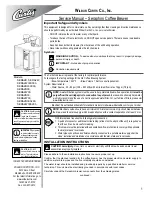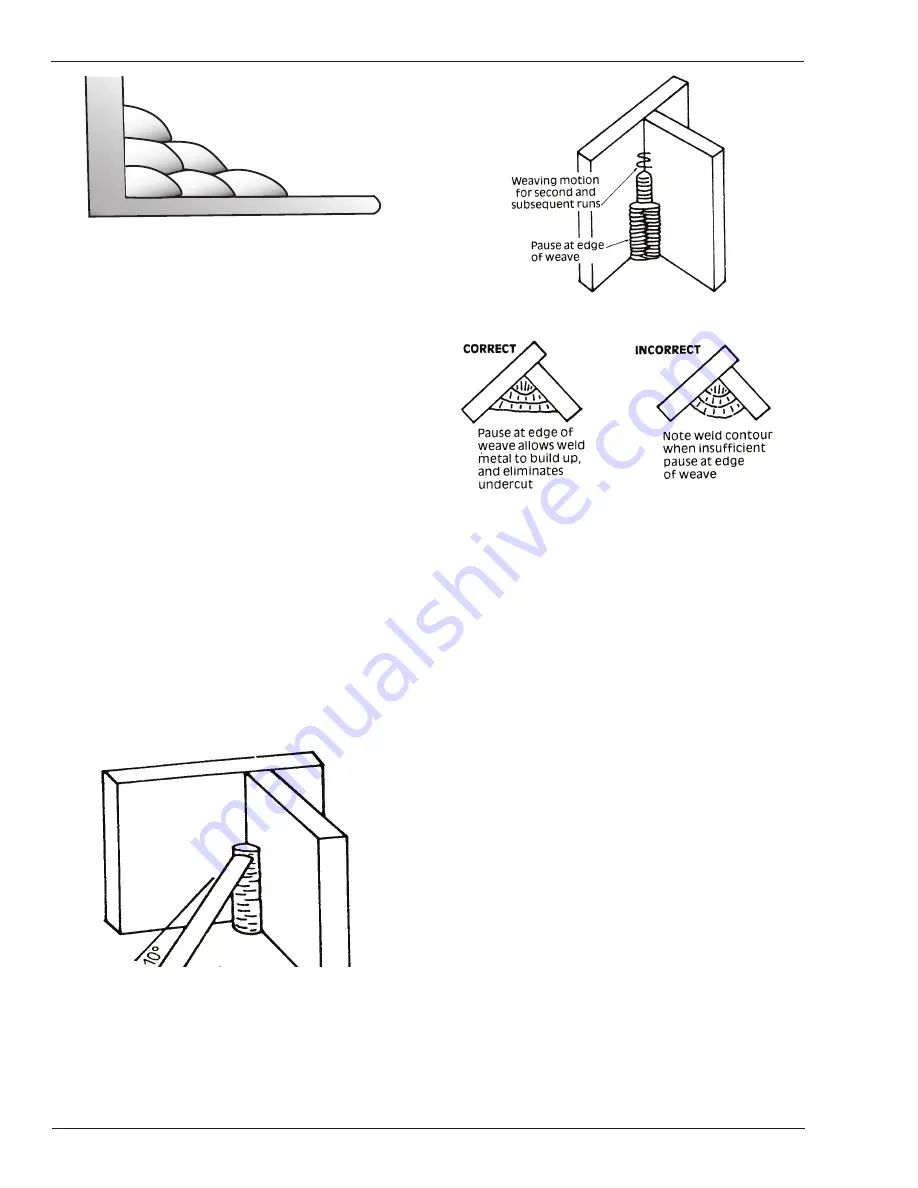
FIREPOWER 160S
OPERATION
Operation
4-10
Manual 0-5369
Art # A-07700_AB
1
2
3
4
5
6
Figure 4-16: Multi-runs in HV fillet weld
C. Vertical Welds
1. Vertical Up
Tack weld a three feet length of angle iron to your
work bench in an upright position. Use a 1/8"
(3.2mm) E7014 electrode and set the current at
120 amps. Make yourself comfortable on a seat
in front of the job and strike the arc in the corner
of the fillet. The electrode needs to be about 10°
from the horizontal to enable a good bead to be
deposited. Refer Figure 4-16. Use a short arc, and
do not attempt to weave on the first run. When
the first run has been completed de-slag the weld
deposit and begin the second run at the bottom.
This time a slight weaving motion is necessary
to cover the first run and obtain good fusion at
the edges. At the completion of each side motion,
pause for a moment to allow weld metal to build
up at the edges, otherwise undercut will form and
too much metal will accumulate in the centre of the
weld. Figure 4-17 illustrates multi-run technique
and Figure 4-18 shows the effects of pausing at
the edge of weave and of weaving too rapidly.
Art # A-07701
Figure 4-17: Single run vertical fillet weld
Art # A-07702
Figure 4-18: Multi run vertical fillet weld
Art # A-07703
Figure 4-19: Examples of vertical fillet welds
2. Vertical Down
The E7014 electrode makes welding in this
position particularly easy. Use a 1/8" (3.2mm)
electrode at 120 amps. The tip of the electrode is
held in light contact with the work and the speed
of downward travel is regulated so that the tip of
the electrode just keeps ahead of the slag. The
electrode should point upwards at an angle of
about 45°.
3. Overhead Welds
Apart from the rather awkward position necessary,
overhead welding is not much more difficult that
downhand welding. Set up a specimen for over-
head welding by first tacking a length of angle
iron at right angles to another piece of angle iron
or a length of waste pipe. Then tack this to the
work bench or hold in a vice so that the specimen
is positioned in the overhead position as shown
in the sketch. The electrode is held at 45° to
the horizontal and tilted 10° in the line of travel
(Figure 4-19). The tip of the electrode may be
touched lightly on the metal, which helps to give a
steady run. A weave technique is not advisable for
overhead fillet welds. Use a 1/8" (3.2mm) E6012
electrode at 120 amps, and deposit the first run
by simply drawing the electrode along at a steady
rate. You will notice that the weld deposit is rather
convex, due to the effect of gravity before the
metal freezes.

